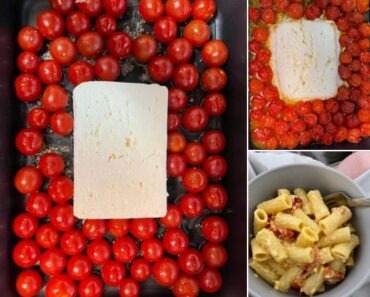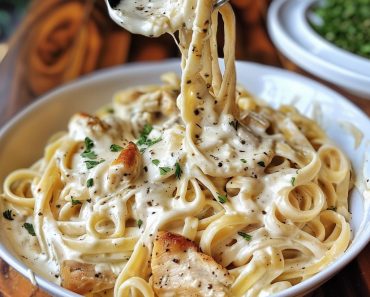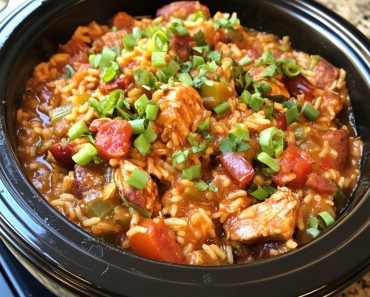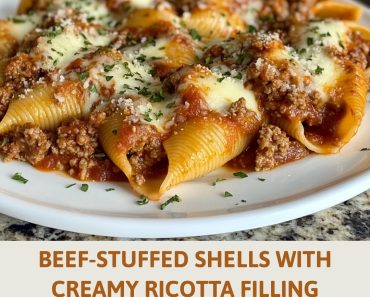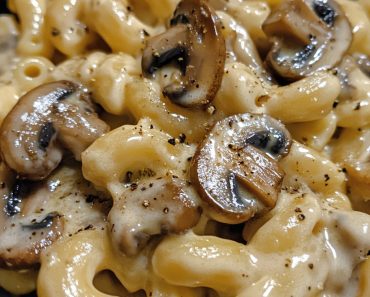
New Orleans Comfort Gumbo
Get ready to create a rich and comforting bowl of New Orleans-style gumbo—a soulful meal that brings a little warmth and Southern charm to any table. Each spoonful of this gumbo, made with tender chicken, smoky andouille sausage, and perfectly seasoned vegetables, brings together layers of flavor in a way that’s both hearty and irresistibly satisfying. This gumbo is perfect for cozy evenings and casual gatherings, letting you unwind with each bite. Let’s dive into the ingredients, step-by-step instructions, and expert tips that will make this recipe your go-to for delicious comfort.
Ingredients Overview
- Vegetable Oil & All-Purpose Flour: The base of your roux, these ingredients combine to create the thick, rich essence of gumbo. Patience is key here; take your time to reach a deep, nutty brown.
- Onion, Bell Pepper & Celery: Known as the “Holy Trinity” in Creole cooking, these three vegetables bring a balanced sweetness and depth to the dish.
- Garlic: Adds a rich, aromatic note to the flavor profile, enhancing each bite.
- Andouille Sausage: Smoky and flavorful, this sausage gives the gumbo its signature flavor, and it’s a must-have for authentic New Orleans-style gumbo.
- Chicken Breast: Adds a tender, lean protein to balance out the richness of the sausage.
- Chicken Broth: Acts as the main liquid, combining with the roux to form the gumbo’s base.
- Diced Tomatoes: Brings a subtle acidity and a touch of sweetness, rounding out the flavors.
- Cajun Seasoning, Thyme, Paprika & Cayenne Pepper: These spices create a deep, warm, slightly spicy flavor that is the heart of gumbo.
- Salt & Pepper: Seasoning essentials for balancing flavors.
- Cooked White Rice: Traditionally served on top, rice soaks up the gumbo, making it a hearty dish.
- Green Onions: The perfect fresh garnish, adding color and a mild oniony flavor.
Step-by-Step Cooking Instructions
Step 1: Make the Roux
- Heat Oil & Add Flour: In a large pot, heat the vegetable oil over medium heat. Sprinkle in the flour and whisk continually to create a roux. Cook slowly, whisking until the roux reaches a deep, chocolate-brown color—this may take around 15-20 minutes. A good roux requires patience; avoid rushing to prevent burning.
Step 2: Sauté the Vegetables
- Add the Holy Trinity and Garlic: Once your roux is ready, stir in the onion, bell pepper, and celery. Sauté for about 5 minutes until the vegetables soften. Add minced garlic and cook for another minute until fragrant.
Step 3: Add the Proteins
- Incorporate Andouille Sausage and Chicken: Add the sliced andouille sausage and diced chicken breast. Cook for 5-7 minutes, stirring occasionally until the meat is browned on the outside.
Step 4: Combine the Base Ingredients
- Add Broth and Tomatoes: Pour in the chicken broth and add the can of diced tomatoes. Stir well to incorporate everything, scraping up any bits from the bottom of the pot for extra flavor.
Step 5: Season the Gumbo
- Add Seasonings: Sprinkle in Cajun seasoning, thyme, paprika, cayenne pepper, salt, and pepper. Stir well, then bring the gumbo to a gentle boil.
Step 6: Simmer
- Let the Gumbo Cook: Once boiling, reduce the heat to low and let the gumbo simmer for about 1 hour. This lets the flavors develop fully and thickens the gumbo to a perfect consistency.
Step 7: Serve and Garnish
- Plate the Gumbo: Serve hot over a scoop of cooked white rice, and garnish with freshly chopped green onions for an added burst of color and flavor.
Storage and Reheating Tips
- Storage: Leftover gumbo should be stored in an airtight container in the refrigerator, where it will keep for up to 3 days. For longer storage, freeze the gumbo (without the rice) for up to 3 months.
- Reheating: To reheat, transfer the gumbo to a pot over low heat, stirring occasionally until warmed through. If reheating from frozen, thaw in the refrigerator overnight first. You may need to add a little water or broth to loosen the consistency.
20 Frequently Asked Questions (FAQs)
1. Can I make gumbo without a roux?
- Traditional gumbo requires a roux, but a lighter version without roux can use more tomatoes for thickness.
2. Can I make gumbo gluten-free?
- Yes, use a gluten-free flour blend for the roux, and ensure your sausage is gluten-free.
3. What is the best rice for gumbo?
- Long-grain white rice is classic, but brown rice works too for a heartier option.
4. Can I use frozen vegetables?
- Fresh is best, but frozen veggies can work in a pinch—just thaw and drain them before adding.
5. How spicy is gumbo?
- It has a gentle heat, but you can adjust the spice by adding or reducing cayenne.
6. Can I add shrimp or seafood?
- Absolutely! Add shrimp in the last 10 minutes of cooking.
7. Can I skip the andouille sausage?
- Substitute smoked sausage or kielbasa, though the flavor won’t be quite the same.
8. Can I use pre-made Cajun seasoning?
- Yes, but adjust salt accordingly as pre-made blends can be salty.
9. How do I prevent my roux from burning?
- Stir constantly and keep the heat low to medium.
10. Can I use beef instead of chicken?
- Chicken is traditional, but beef can add a rich flavor twist.
11. What can I use instead of chicken broth?
- Vegetable or seafood stock works as an alternative.
12. Can I make it vegetarian?
- Yes, omit meats and add more vegetables or a plant-based sausage.
13. How do I know when the roux is ready?
- The color should be deep brown, with a nutty aroma.
14. How long should I cook gumbo?
- At least 1 hour for flavor, but longer is better if you have the time.
15. What’s the difference between gumbo and jambalaya?
- Gumbo is a stew served over rice, while jambalaya is a rice dish cooked with the ingredients.
16. Can I make gumbo in a slow cooker?
- Yes, but make the roux separately and add it to the cooker.
17. Is gumbo better the next day?
- Yes, the flavors deepen with time, making leftovers delicious.
18. Can I add okra?
- Yes! It’s a classic addition that adds thickness and flavor.
19. Should gumbo be thick or soupy?
- A good gumbo should be slightly thick but pourable, not too soupy.
20. How can I make it creamier?
- Stir in a splash of cream or coconut milk at the end for a rich finish.
20 Secrets to Culinary Perfection
- 1. Use a heavy-bottomed pot to prevent the roux from burning.
- 2. Patience with the roux is key to achieving the rich, nutty flavor.
- 3. Don’t skimp on fresh vegetables; they provide the best flavor.
- 4. Browning the sausage and chicken adds depth and caramelized flavor.
- 5. Deglaze the pot with a splash of broth before adding the rest.
- 6. Add a dash of Worcestershire sauce for a subtle umami kick.
- 7. Use low-sodium broth so you can control the salt level.
- 8. Toast Cajun seasoning lightly in the pot for a few seconds before adding.
- 9. Layer seasonings gradually as you cook for a deeper flavor.
- 10. Finish with a dash of hot sauce for extra zest.
- 11. Garnish with fresh parsley alongside green onions for added freshness.
- 12. Add seafood last to prevent it from overcooking.
- 13. Balance cayenne carefully—too much can overpower the dish.
- 14. Serve with cornbread for a classic pairing.
- 15. Try smoked paprika instead of regular for a smoky edge.
- 16. Add a bay leaf while simmering for aromatic depth.
- 17. Opt for bone-in chicken thighs for juicier meat.
- 18. Use canned fire-roasted tomatoes for extra flavor.
- 19. Stir in a splash of sherry vinegar just before serving for brightness.
- 20. Let it rest before serving to allow flavors to meld.





